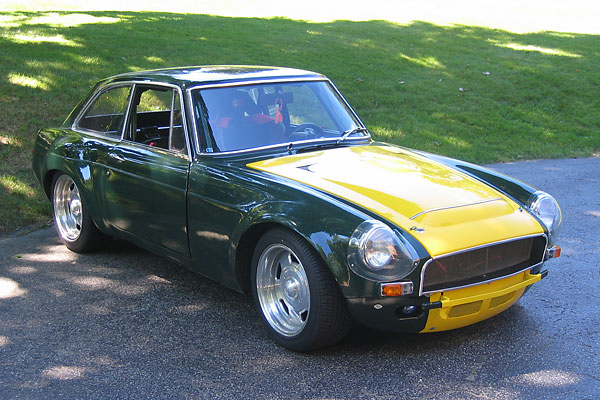
Lorenz Hassenstein's Rover Aluminum V8 Powered 1968 MGB-GT
as published in British V8 Newsletter, Volume XV Issue 3, December 2007Owner: Lorenz Hassenstein
City: Ridgefield, CT
Model: 1968 MGB-GT
Engine: Rover aluminum V8 (5.0L)
Conversion by: owner
| Engine: | 4.6L Rover motor (with cross-bolted main bearings, etc.).
The engine has been built up to 5.0L (i.e. stroked via offset crankshaft
grinding), balanced, and blue-printed. It has roller rockers and a new
roller cam (108 degress lobe separation, 258/265 duration at 0.585" lift,
which replaces a previous cam with 110 degrees lobe separation, 240-244
duration at 0.050" lift), oversized valves, ported Buick 300 aluminum
heads, and JE pistons. MSD ignition and Simple Digital Systems EFI
management system.
|
| Induction: | Fuel injected with 40 lb. injectors, open plenum with a 75mm
throttle body fed through a K&N Filter; a water injection system
is next on the list. |
| Oil System: | The geroter oil pump is inside the Rover front cover, but the front
cover was modified so the oil relief valve and a remote filter could
be mounted on the fender well. You can thus easily adjust the oil
pressure to whatever you want it to be. It's currently adjusted to
provide 30lbs at idle, 50 while cruising, and 75 when you get on it.
This installation also provided clearance for the stock MGB steering rack. |
| Cooling: | C&R 3" core double pass aluminum radiator; Spal 16" puller and
a 12" pusher with a fan controller unit. Coolant is glycol. 25 row
oil cooler mounted under the deck. Undersized pump pulley. |
| Exhaust: | 1 5/8" thru-fender headers into a dual 2.5" exhaust system with an X-pipe
under the transmission. (See photo.) The high performance mufflers are
mounted vertically on either side of the fuel cell. |
| Transmission: | WC T-5 with a cruising 5th - great fuel economy on the highway and it's
dependable handling the power. The bell housing was machined to ensure
proper run-out. Tilton hydraulic throwout bearing (slave cylinder) with
a Center Force Clutch. Custom fabricated driveshaft by D&D Fabrication. |
| Rear Axle: | Dana 44 from a Jeep or mail truck, with 3.73:1 gears and a limited
slip differential. (Bought from D&D Fabrication.) It fit nicely
under the body kit! |
| Front Susp.: | Uprated lever arm shocks with comp valves and 20 weight oil; 2" lower
racing springs with longer lower arms all sitting on nylatron bushings.
1" custom sway bar with fully adjustable end links making it capable
of setting pre-load. |
| Rear Susp.: | Koni shocks on 2" lowered racing springs; 5/8" sway bar; anti-tramp bars
and track bars. |
| Brakes: | 12" vented front rotors and 12" solid rotors in back. Wilwood 4-pot
calipers on all 4 corners with a Tilton dual master, remote reservoirs
and a rear brake proportioning valve. |
| Wheels/Tires: | The street tires are 16x8's with Pirelli 225's in the front and 255's
in the rear. For competition, the tires are 17x8's "DOT" slicks (225's
in the front and 255's in the rear.) |
| Weight: | 2,089 with a half tank; weighed some five years ago and much has changed
on the car: glass, window cranks and all unnecessary weight has been removed. |
| Electrical: | Mix of MG and new wiring necessary to support the EFI, fuel pumps and
electronics. 160 amp alternator. Gauges are Autometer comp. No audio!
(Weighs too much.) The battery is installed in the LH battery box. |
| Chassis Mods: | The car was stripped and etched before the Sebring body kit with a
fiberglass hood was installed. A six point roll cage was also installed
however I never liked the installation. The forward track bar mount also
acts as a safety catch for the driveshaft. The car has a 14 gallon fuel
cell and a 4 gallon surge tank (in the RH battery box) so the EFI system
won't ever run dry under cornering. I installed an aluminum deck in the
back to add an additional fire barrier between me and the fuel cell.
|
| Interior: | The interior was stripped and painted lightweight door panels were fitted.
The dash is original, except stripped of its padding and modified to
take the 2 5/8 inch gauges. There's no insulation and the MG rubber
floor mats and carpet all slide right out. A friend had a Momo carbon
fiber chair and competition wheel and belts which he gave me! The side
glass was removed and the window crank assemblies were also tossed.
I keep a passenger seat in the car so I can
scare folks who want a ride! |
| Performance: | Unknown. All I can say is it scares me to this day. 1st and 2nd under
full throttle go by too fast to register. Just watch the shift light and
listen for the rev limiter! 3rd is just silly. 6,000 rpm in 4th puts me
at 125 MPH. I can break the tires loose in second at just about any time
I want (and too often around corners). The suspension is soft enough that
it launches great and tracks very straight. It is as predictable as any
factory MG ever was. It handles like a dream, but I could use a new front
coil-over set up from Fast Cars. |
| Comments: | I would tell anyone to invest in the clutch system and the brakes. I had
a leaky slave that just made a mess and slopped around and made noise...
and it couldn't take the pressure. The Tilton throw-out bearing and
Center Force clutch are bulletproof. The drive train in the car is as
solid as it gets. The brakes also need to be bullet proof! Stopping from
100 plus is important.
I would also suggest that you assemble the car and then take it apart to have it painted and to do the final assembly. Drive it around dirty for a while first - who cares! - it will look good in the end. I also think you need to think in systems and do your homework. A 300+ (rear wheel) motor with the stock suspension isn't too safe. I am also still finding new gismos and gadgets that I wish I had some years ago... which makes it fun I suppose. Tim Lanocha of Lanocha Racing continues to be a great resource and is great to work with. I love it! I have owned a 1970 MGB that my brother bought when he got out of Viet Nam. I got my hands on it in 1982 which is when the affliction began. I started this GT V8 project in 1996 when my daughter was born. While I love tooling around in my stock MGB, smokin' old fogies in Porsches and Vettes (and "tuners"/kids) in the GT makes me as happy as a pig in... |
| Completed: | June 2003 (although modifications are ongoing!) So far it's been driven
about 5000 miles, as of October 2007. |




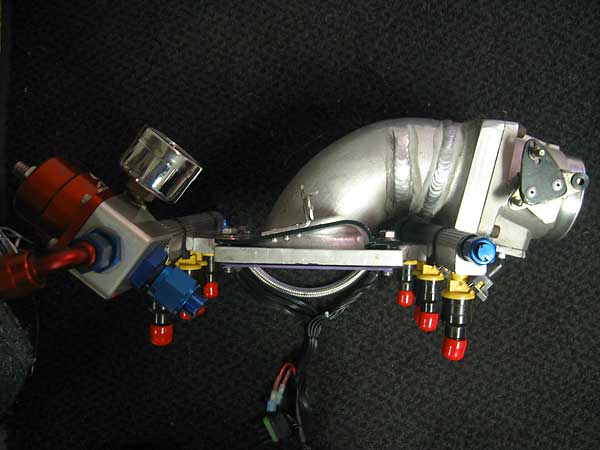
The braided hose on the forward side of the regulator goes to a bleed cap (for removing air from the system) and to the fuel pressure sender and fuel pressure cut off switch. (These components are mounted high on the passenger side inner fender.) The SDS EFI CPU can be ordered with a fuel-pressure cutoff switch to stop fuel flow in the event of an accident. The relay works by monitoring both fuel pressure and engine RPM. If
I'm running 50 lbs of fuel pressure, which is more than enough.




The switch panel in the center console is just a piece of sheet aluminum with holes punched for the switches. I isolated everything electrically. There are 4 fuse panels in the car; two under the hood replacing the MG unit and two tucked up under the dash adjacent to the battery cutoff switch.
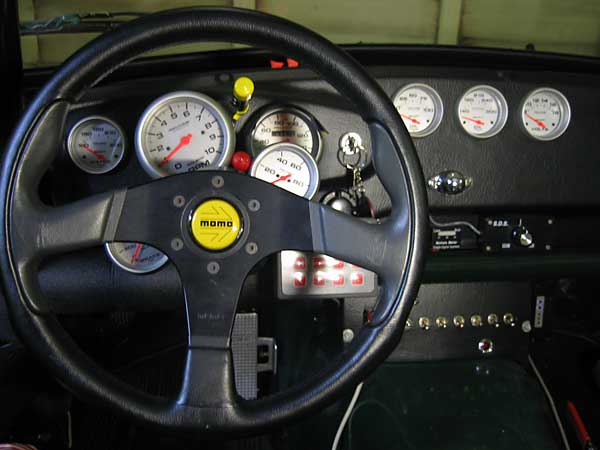
All front-to-back wiring (e.g. the running lights circuit) runs along the inside of the passenger side floor. The fuel lines are run under the passenger side floor and it seemed to made sense to separate them in case of an accident. The carpet and floor mats slide right out, making it easy to remove weight when heading off to the track.
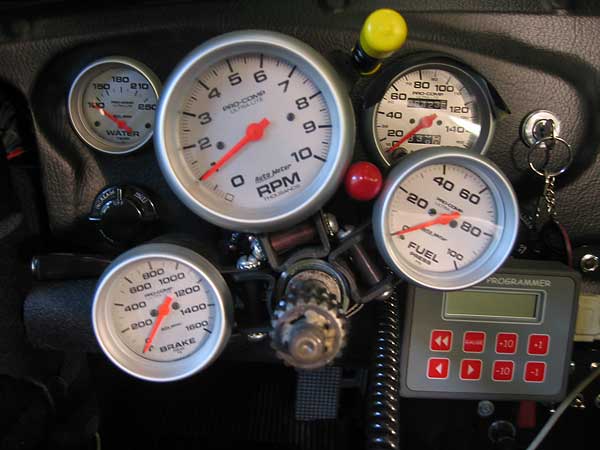
The SDS electronic fuel injection control box is pretty easy to use. (You can see the control unit to the right and below the steering column.) The system includes a tach pickup, water temperature sensor, air temperature sensor, MAP (manifold absolute pressure) sensor, and throttle position sensor. (There's also a cold start solenoid if you want to hook it up.) It sounds complex, but it isn't. I have had lots of mechanical motor issues but never once has the EFI caused a problem.

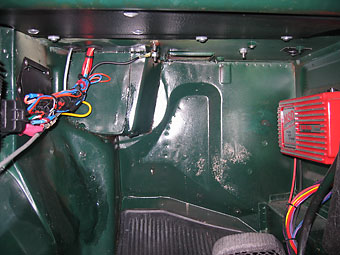

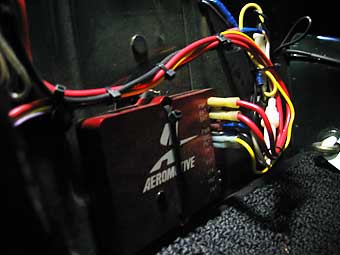
The fully programmable Spal dual cooling fan control unit is shown on the mounted on the passenger's side of the transmission tunnel. The MSD ignition box is mounted on the opposite side of the footbox. Note that it's important to physically separate the ignition system from the EFI wiring to reduce the chance that radio frequency interference will cause the EFI unit to malfunction.
The bottom righthand photo shows the EFI high-pressure fuel pump control unit, which is mounted behind the passenger seat. This unit monitors and controls the fuel pump duty based on engine RPM.
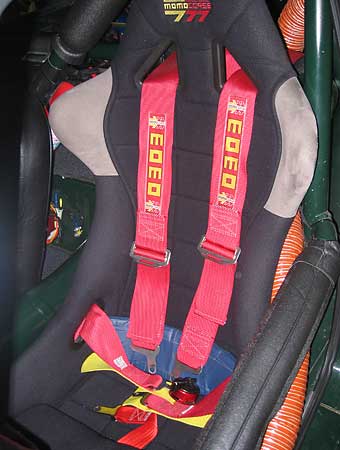




The RH (passenger's side) battery box houses a custom, fabricated aluminum fuel surge tank. A low-pressure, high-volume pump transfers fuel from the fuel cell into this tank. A high-pressure, high-volume pump takes fuel from the bottom of the surge tank to a filter and then up to the engine. The fuel moves around the engine's fuel rails and to the pressure regulator. Excess fuel is released by the pressure regulator, and travels back to the surge tank.
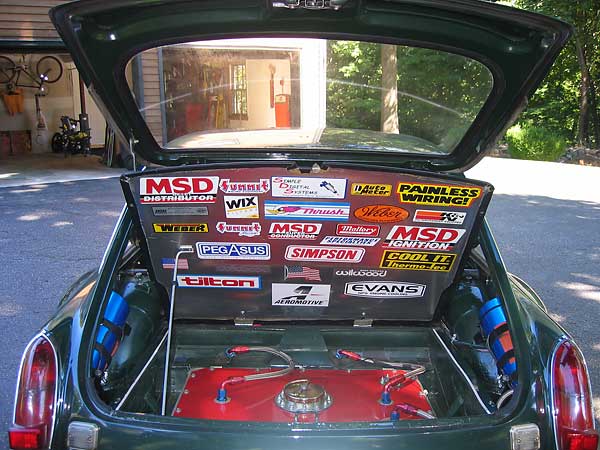
In this particular installation, the EFI system's electronic controller spins the high-pressure pump at 50 percent capacity until the engine reaches 3,000 RPMs, and then it pumps at full output.

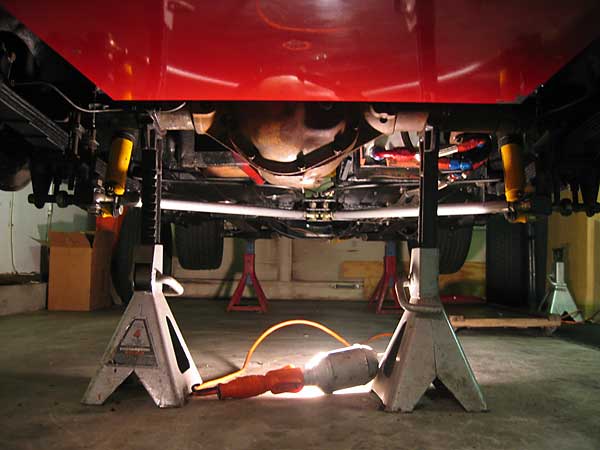

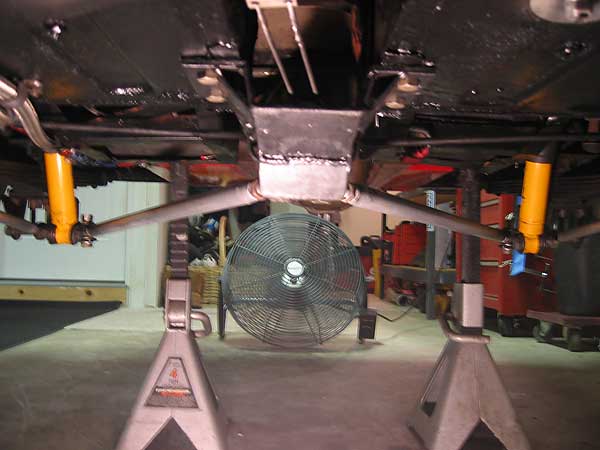

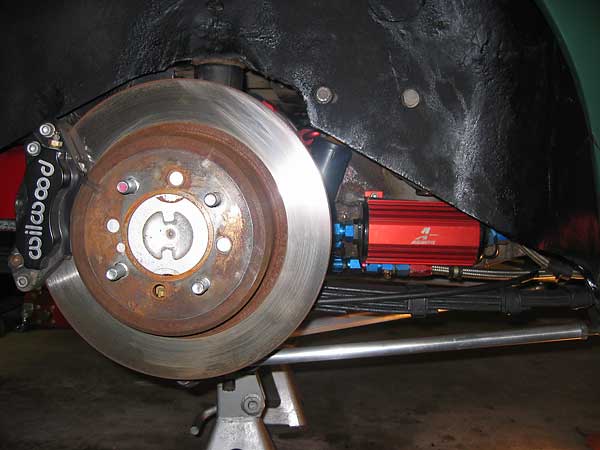



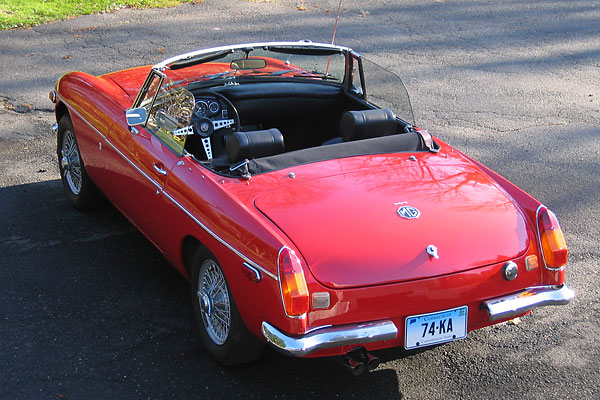
Lorenz's other MGB.

